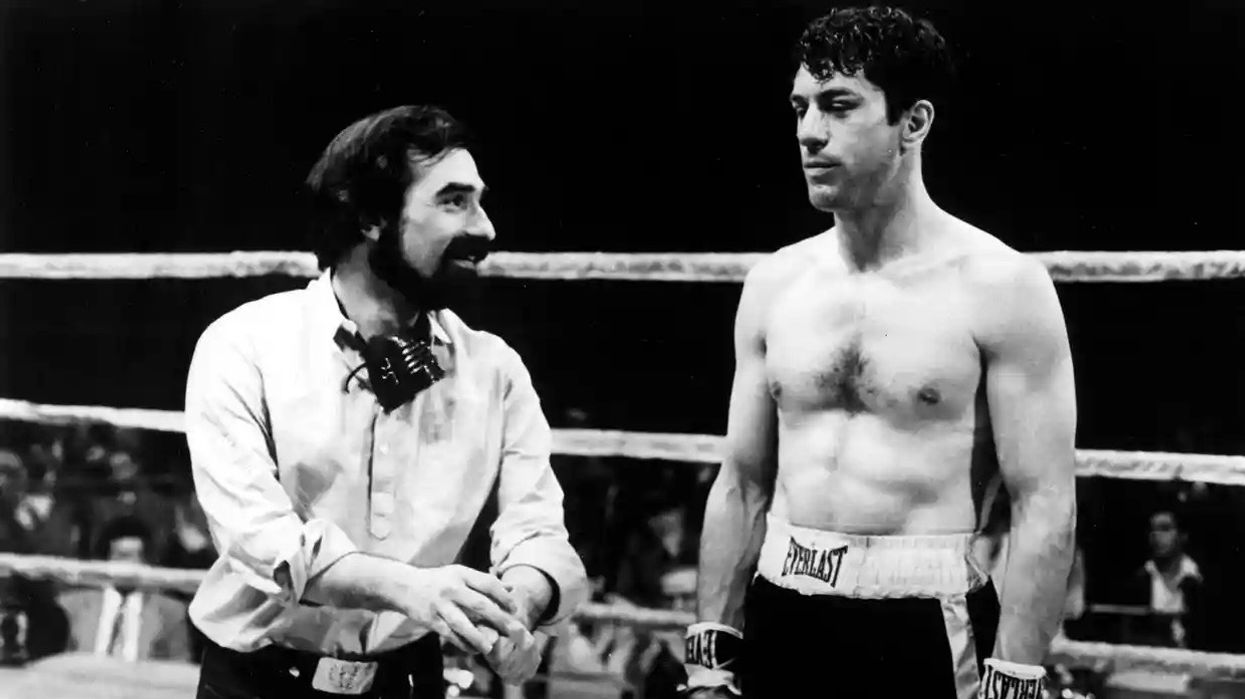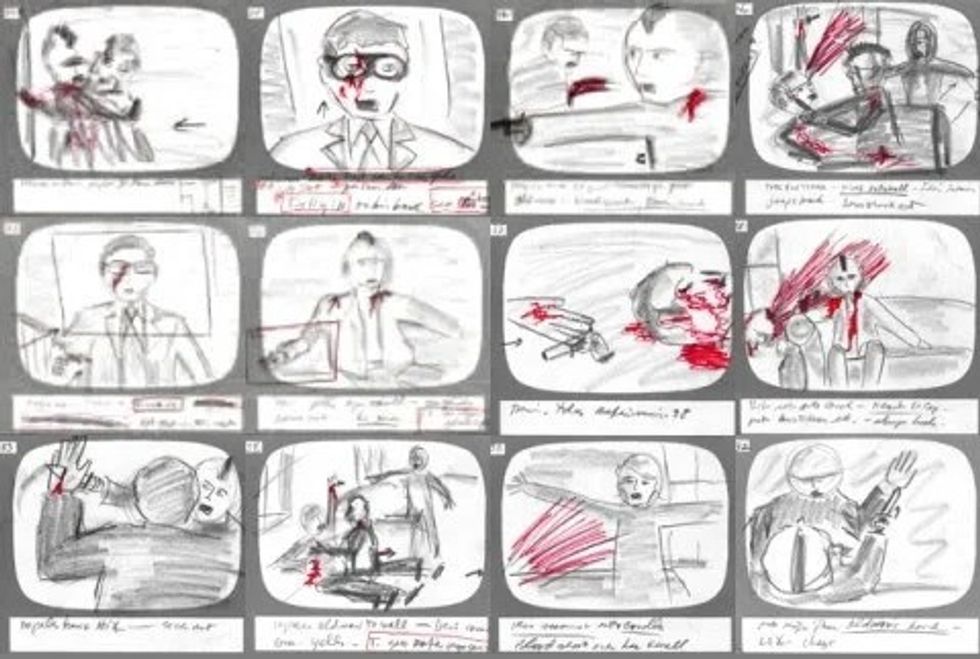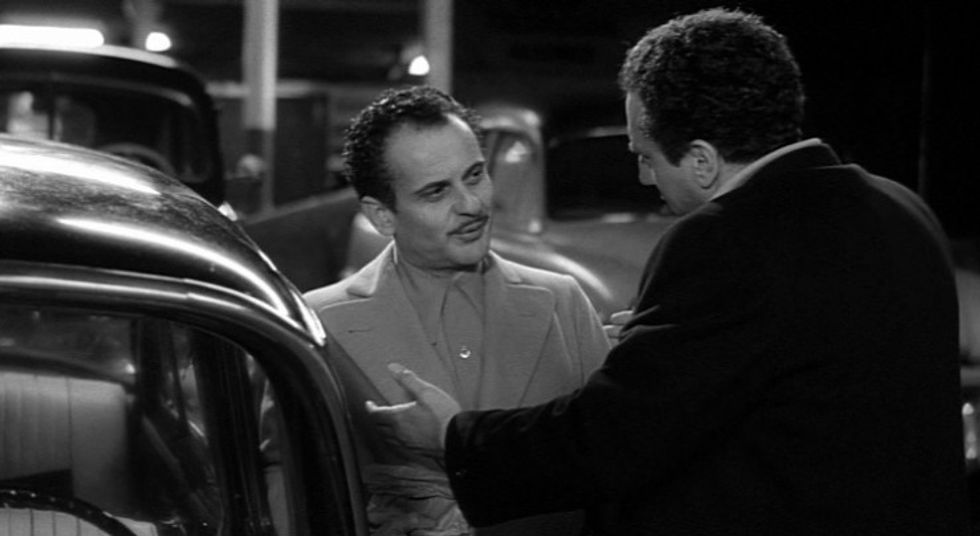How Does Martin Scorsese Block and Shoot a Scene?
Learn how to block and shoot from one of the greatest directors to ever live.

There are not enough platitudes when writing about Martin Scorsese. When it comes to filmmaking, he is a legend. Known for his masterpieces such as Taxi Driver, Raging Bull, and Goodfellas, Scorsese has a unique and distinct approach to directing.
His creative process involves meticulous planning, detailed storyboarding, and innovative camera techniques.
These are replicable practices that you could be doing as well. They can help you see the scene, understand where the camera goes, and build a bond with your crew.
In this article, we will explore the various aspects of how Martin Scorsese blocks and shoots a scene, including his inspirations, planning, and execution.
Table of Contents
How Does Martin Scorsese Block and Shoot a Scene?
Before we delve into the specifics of Scorsese's filmmaking process, it's essential to understand the inspirations and influences that have shaped his unique style.
All great artists are influenced by the world around them, and Scorsese is no different.
Growing up in New York's Little Italy neighborhood, Scorsese was exposed to the city's vibrant culture and diverse population. Additionally, his Roman Catholic upbringing and passion for Italian Neorealism films like Bicycle Thieves and Rome, Open City played a significant role in molding his artistic vision.
Think about what shapes you.
Scorsese is also heavily influenced by the French New Wave movement, which emphasized experimental and innovative filmmaking techniques. These formative experiences and influences have contributed to Scorsese's distinctive approach to filmmaking.
Let's get into that now.
Planning and Storyboarding
We're really big on storyboarding at No Film School. Planning your shoot can help you feel calmer on the day, and allow you to sketch out ideas for possible variables.
One of the essential aspects of Scorsese's filmmaking process is planning and storyboarding. He begins by creating a detailed storyboard for each shot, mapping out the look of the film. This process helps Scorsese visualize the story and determine the best way to present it on screen.
The storyboarding process also allows Scorsese to communicate his vision effectively with his cinematographer, ensuring that they are on the same page. By working closely with his cinematographer, Scorsese can ensure that the camera movements, framing, and lighting are perfectly aligned with his artistic vision for the film.

The Art of Blocking
Where should the actors stand in the scene? How should they move through it? We call that blocking. Blocking is the process of determining where actors will move and how they will interact within a scene.
Scorsese is known for his precise and intricate blocking, which helps to create a sense of realism and authenticity in his films. By carefully planning out each movement, Scorsese can ensure that his actors are positioned correctly within the frame, and their actions contribute to the overall narrative of the film.
From Travis Bickle (Robert De Niro) wandering through the brothel to Jimmy Hoffa entering that house, Scorsese blocks everything with thematic intent.
In addition to the physical positioning of the actors, Scorsese also pays close attention to the emotional blocking of his scenes. He works closely with his actors to develop their characters and explore the emotional depth of their performances. This attention to detail helps to create rich, layered performances that resonate with audiences.

Camera Techniques
Scorsese is known for his innovative and dynamic camera techniques, which have influenced countless filmmakers over the years. Some of his signature techniques include:
Dolly Shots
A dolly shot involves moving the camera on a wheeled platform or track to create a smooth, continuous movement. Scorsese frequently employs this technique to create a sense of fluidity and momentum within his scenes.
One of the most famous examples of a Scorsese dolly shot is in Raging Bull, where he does a dolly zoom to disorient the audience and put them in the shoes of Jake LaMotta (Robert De Niro).
Steadicam Shots
The Steadicam is a camera stabilizer that allows for smooth, handheld camera movement. Scorsese often uses Steadicam shots to create a sense of intimacy and immediacy in his films. For example, the shot of Henry Hill (Ray Liotta) entering the Copacabana nightclub in Goodfellas is an intricate shot that follows them through different environments and with different lighting techniques.
Long Takes
Scorsese is known for his masterful use of long takes, which involve shooting a scene in a single, continuous shot without any cuts. This technique requires careful planning and choreography, as any mistakes would require the entire scene to be re-shot.
Some notable examples of Scorsese's long takes include the aforementioned Copacabana scene in Goodfellas and this shorter long take in Gangs of New York.
Lighting and Color
There's a lot you can dissect via color theory and Martin Scorsese.
Scorsese's films often feature distinctive lighting and color schemes that contribute to the overall atmosphere and mood of the story. He works closely with his cinematographer to develop a visual language that enhances the narrative and emotional impact of the film.
For example, in Taxi Driver, Scorsese and cinematographer Michael Chapman used a combination of neon lights, street lamps, and car headlights to create a gritty, urban environment that reflects the film's dark themes. In contrast, The Age of Innocence features a more muted and delicate color palette, evoking the restrained elegance of the period setting.

Collaboration with Actors
The way to move your career forward is to find actors who trust you and for you to trust as well.
Scorsese is known for his close collaboration with his actors, often working with the same performers across multiple films. This long-standing relationship with actors like Robert De Niro, Leonardo DiCaprio, and Joe Pesci allows for a deep understanding and trust between director and performer, resulting in powerful and nuanced performances.
In addition to his regular collaborators, Scorsese has a talent for drawing out exceptional performances from actors in supporting roles.

Editing
When you're done with everything else, editing is what can take your film over the top. You can fix things in post, get a new understanding of the scene, and sort out your favorite shots.
Scorsese is known for his fast-paced and dynamic editing style, which he has developed through his long-standing collaboration with legendary editor Thelma Schoonmaker. Together, they create a visual rhythm that propels the story forward and keeps the audience engaged.
Scorsese's films often feature rapid cuts, jump cuts, and cross-cutting between parallel narratives, creating a sense of energy and momentum. This editing style has become a hallmark of Scorsese's filmmaking, contributing to the distinctive look and feel of his films.
Sound Design and Music
Scorsese is a master of using sound and music to enhance the emotional impact of his films. He often incorporates popular music into his soundtracks, using songs to evoke a particular time period or to underscore the emotions of a scene.
In addition to his use of popular music, Scorsese also collaborates with composers to create original scores for his films. For example, the haunting score for Taxi Driver, composed by Bernard Herrmann, adds a layer of tension and unease to the film's atmosphere.
Legacy and Impact
It's impossible to talk about Scorsese without talking about how much he means to cinema. At times, it feels like he's the voice holding us all together.
Scorsese's unique approach to filmmaking has had a significant impact on the industry, inspiring countless filmmakers and setting a high standard for cinema. His meticulous planning, innovative camera techniques, and close collaboration with actors, cinematographers, and editors have resulted in a body of work that is both visually stunning and emotionally resonant.
As Scorsese continues to create new films, his influence on the world of cinema remains strong. His passion for the medium and dedication to his craft serve as an inspiration for aspiring filmmakers and a testament to the power of cinema as an art form.

Summing Up How Martin Scorsese Blocks and Shoots a Scene
Scorsese's approach to blocking and shooting a scene is a testament to his mastery of the filmmaking craft. From detailed storyboarding and intricate blocking to innovative camera techniques and close collaboration with his team, Scorsese's process results in films that are visually stunning, emotionally powerful, and culturally significant.
By understanding the various aspects of how he works, we can gain a deeper appreciation for the artistry and skill that goes into creating his cinematic masterpieces.
Now go out and try it yourself.
Happy shooting.












